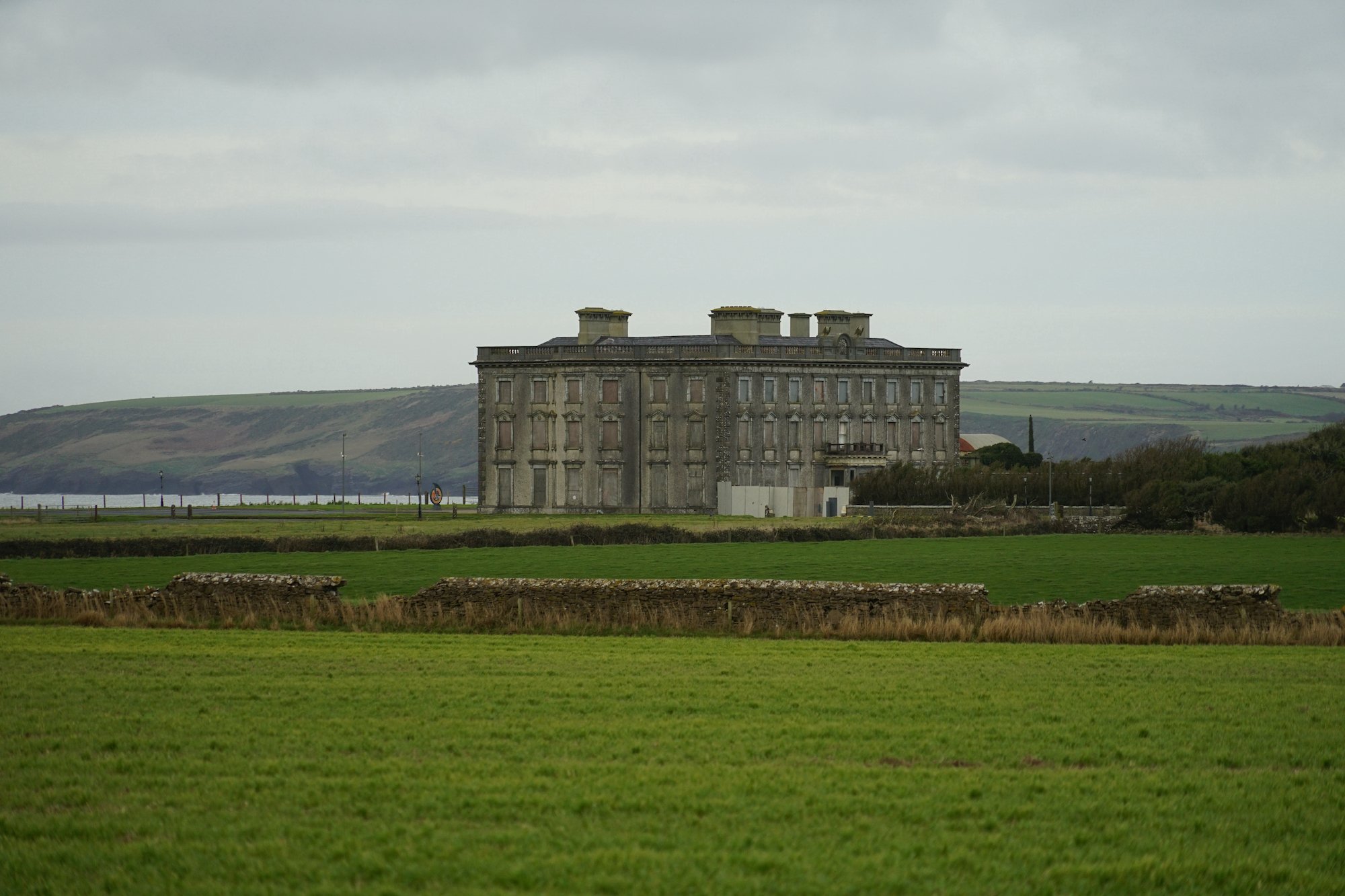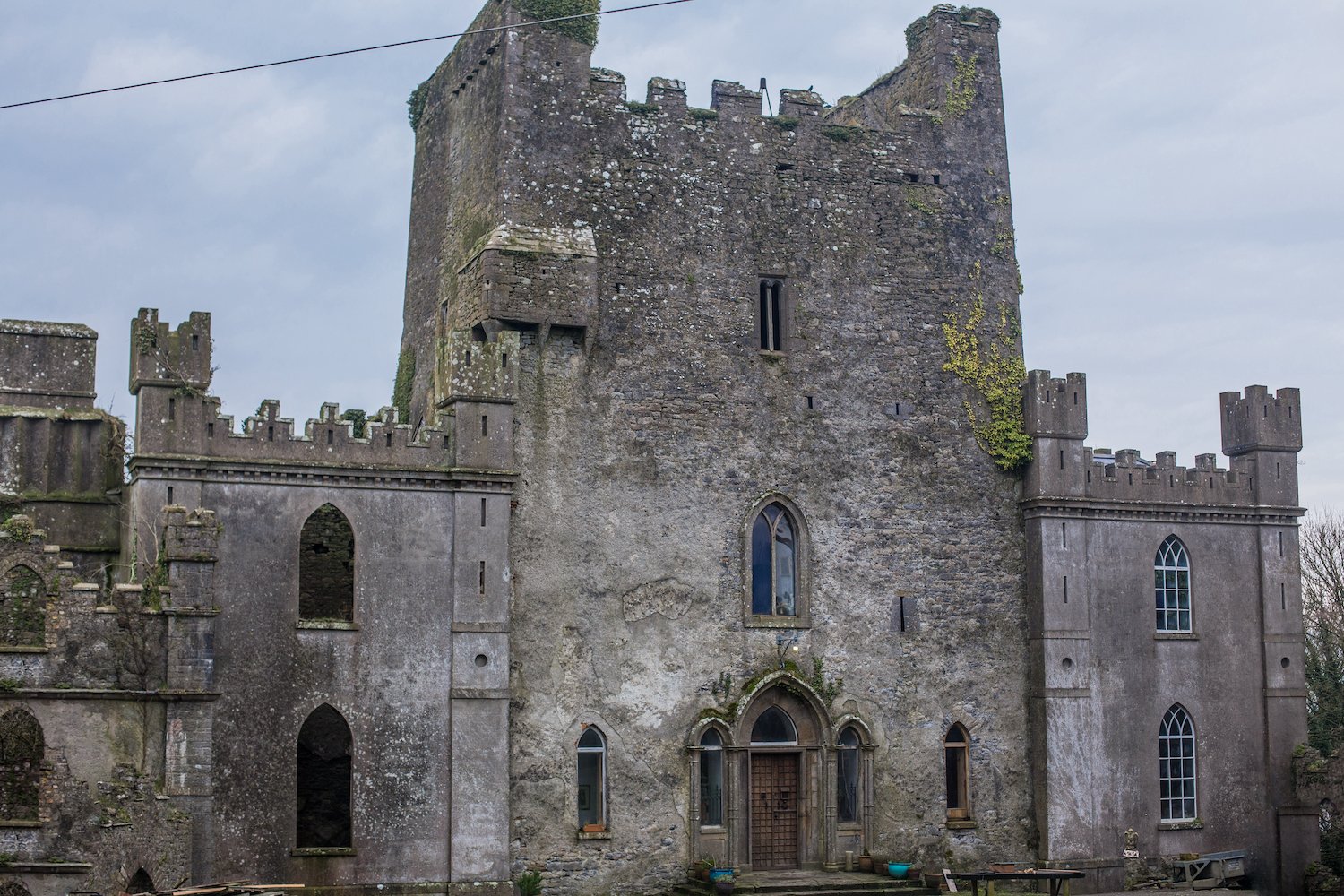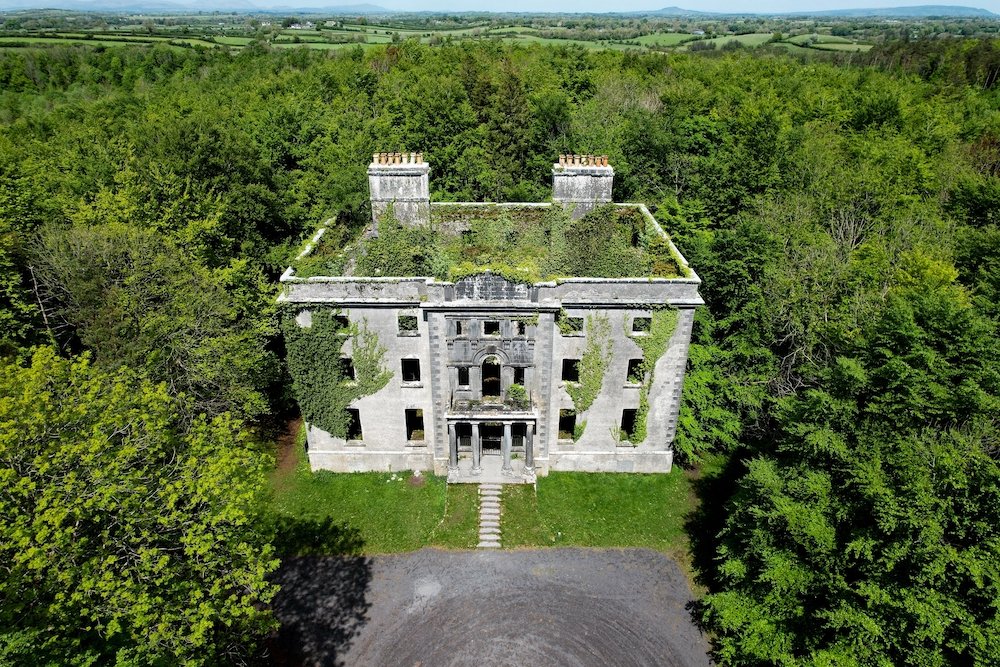Halloween is a time for family and friends to gather around a crackling fire and share ghost stories. Apparently in Victorian times, spooky tales were more associated with Christmas but nowadays we savour them at the end of October. There is a limitless supply of ghost stories in Ireland where huge ruined castles loom on the landscape and the ruins of big houses lie abandoned at the end of long winding avenues. They have always fascinated me so, to celebrate the spooky season, I’ve found four tales of haunted houses.
The Hell Fire Club near Dublin became a venue for gentlemen with a penchant for secret activities and black magic
The Hell Fire Club - Montpelier Hill near Dublin
Where the hellfire club stands on top of Montpelier Hill near Dublin, there was once an ancient grave covered by a cairn of stones. William Connoly, a politician and one of the wealthiest men in Ireland in the 18th century, built a hunting lodge there in 1725, disturbing the grave and using one of the standing stones as a lintel for his fireplace. You can imagine how that would upset the spirit world! During a terrible storm some years later, the roof of his lodge blew off.
After Connoly died, the building was sold and fell into the hands of the Irish Hellfire Club, a collection of dubious gentleman who liked to entertain themselves with black magic sessions and other wild secret activities. Stories about the scandalous events that took place are still told to this day but who knows how true they are?
One of the stories reveals how the devil arrived one dark and stormy night and was playing cards at a table with these gentlemen when one of them dropped a card and bent down to pick it up. It was only then that he noticed the cloven hooves of the guest. This is a common plot in Irish ghost stories and perhaps further afield, and takes us on to Loftus Hall, one of the most notorious houses in the country.
Loftus Hall on the Hook Head peninsula is another house with a haunted reputation and a story about a visit from the devil
Loftus Hall – Hook Head peninsula in Wexford
Loftus Hall in Wexford is another house with a story about the devil. We used to stay in Dunmore East, a seaside town across the estuary with a good view of the hall, and we often heard the local legend about this gloomy place.
One dark and stormy night (yet again) a wild sea brought a tall, dark and dripping stranger to the door of the hall in search of assistance. He was taken in by the family who lived there at the time, and offered food and a bed for the night. The youngest daughter, Anne, thought their guest most attractive but, as the family and visitor were playing cards after dinner, she dropped one from the pack and bent down to retrieve it, only to discover that the handsome stranger had cloven feet. She let out a piercing shriek and the devil rose from his chair and flew onto the air, vanishing through the ceiling.
To this day, there is supposed to be a circular mark that cannot be painted over because it always reappears. I suspect it might be damp but I don’t want to ruin the story. There is also supposed to be a section of the stairs where someone fell to their death.
The house is popular with paranormal enthusiasts. I’ve often driven past the Hall and one day I’d like to see inside. I believe there is also a walled garden.
Many castles in Ireland have tales of hauntings but one of the best known is Leap Castle in County Offaly
Leap Castle – Co Offaly
Many castles in Ireland have tales of hauntings but one of the best known is Leap Castle in County Offaly. If you look up the website for Leap, you’ll find it described as the ‘world’s most haunted castle’ with a ‘turbulent and bloody history’. It was built in the 1500s and was subjected to a series of ferocious battles. In the 1920s a collection of skeletons was discovered inside the building.
The Red Lady is one of the ghosts who prowls around Leap Castle. She is easy to recognize apparently, due to the fact that she is extremely tall, wears a red dress and carries a dagger in one hand in a threatening manner. If you encounter the Red Lady, you will notice a strange light around her and you’ll feel a piercing cold that numbs your heart.
There are also two child ghosts in Leap called Emily and Charlotte. Emily was killed at the age of eleven in the 17th century when she fell from the battlements of the castle. Locals have reported seeing the figure of a young girl tumbling from the castle but disappearing before she hits the ground. Poor Charlotte has been sighted dragging a deformed leg behind her.
Since 1991 the castle has been owned by the musician Sean Ryan. He and his wife live there and continue the restorations. If you fancy a tour or would like to read more about the ghosts of the most haunted castle in the world, visit this website: http://leapcastle.net/
The house and lands at Moore Hall are now owned by the state forestry company, Coillte, and the abandoned mansion is completely surrounded by trees
Moore Hall – County Mayo
Children also feature in local ghost stories concerning the ruined Moore Hall in County Mayo. The house was built in the 1790s by George Moore, who had amassed a fortune in the wine trade and owned a fleet of ships. Unfortunately the family home was burned down in 1922 during the Irish Civil War by anti-Treaty supporters and the owner, George Augustus Moore, a well-known novelist and writer, made the decision to stay in England after that. He was friends with Irish literary giants of the time, such as W B Yeats, Lady Gregory and Oscar Wilde.
The house and lands are now owned by the state forestry company, Coillte, and the abandoned mansion is completely surrounded by trees. I’ve read stories where locals have visited the ruin at night and encountered strange things, including the ghostly laughter and running footsteps of children inside. It’s another of the big ruined houses of Ireland that I would love to visit but perhaps not at night.
Suzanne Winterly is the author of mystery and dual timeline historical mystery novels set in the late 19th century and in the present. More details below:
For more about books, stories and photographs, author research, history and gardening, join Suzanne’s newsletter here:




